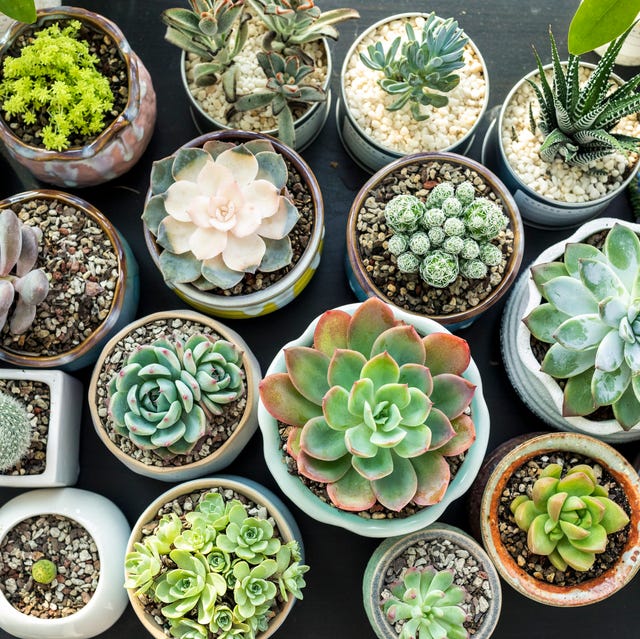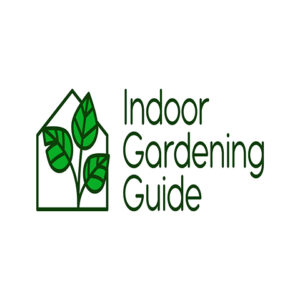
Have you experienced putting a snake plant inside your bathroom and seeing it develop mushy leaves? You might have had spider plants wilt beside your fireplace? Then perhaps, the humidity in air doesn’t suit the nature of your plants. A home’s humidity level is an essential factor for growing plants, so consider this for your indoor garden.
If you are thinking about the health of your plants, you need to think of the humidity level where you position your plants. Most houseplants need 40-60% humidity; the higher the humidity level, the happier the plant will be.
Here are lists of some plants that thrive in surroundings in different levels of humidity. At the same time, you’ll see some tips on how to adjust the moisture to cater to your indoor plants’ needs.
Humidity and its Effects on Plants
House plants are affected by different room conditions such as:
- Soil type
- Amount of water
- Exposure to sunlight
- Humidity and temperature
One important factor in growing plants that we usually don’t consider is humidity. Humidity is the level of water vapor suspended in the air. The higher the temperature, the higher the level of water vapor. This is due to the increase of the evaporation of water as the temperature rises. The collection of too much moisture in the air creates precipitation.
How To Check A Rooms Humidity Level

The best way to check your rooms humidity level is to purchase a Hygrometer or Indoor Humidity Monitor.
Another way is to place ice cubes in a glass and place the glass in the room for a few minutes. (5-8) When you come back, check to see if there are droplets on the outside of the glass. If there aren’t you might have a problem since your humidity level is less than 15%. Generally, a bad place to put a plant.
How To Increase Your Rooms Humidity Level
The best way to increase your rooms humidity level is to get yourself a humidifier. Preferably one that allows you to control the levels of humidity in a room.
Another quick and free way is to boil some water and place it in the room.
How to Decrease Humidity Levels In Your Room
The best way to decrease humidity levels in your room is to use a Dehumidifier.
Other ways to decrease humidity involve, ventilating room (fans), air conditioning, removing plants, and rock salt. Having some containers with rock salt can get rid of water in the air since rock salt pulls moisture from its surroundings.
Plants that Thrive In Low Humidity
Homes generally have a 30% humidity level. During cold seasons, the humidity levels usually drop even more. So, if you are keeping plants that love to conserve water, this humidity level is ideal.
Succulents Thrive in Less Humid Areas

Succulents are one of the most common house plants that love less humid areas. The fleshy leaves of the succulent are used to store water, making it adaptable to dry or arid soil conditions. Succulents are water-keepers, so they are perfect when placed in areas where humidity is low.
Cacti Love the Dryness

The cactus is the most common plant associated with deserts since they are very resistant to extreme climate temperatures. Cacti have abandoned leaves and have stems that contain chlorophyll used for photosynthesis. Like the colorful succulents, cacti are famous as indoor plants because of their appearance (especially when blooms start to appear) and low water consumption.
Snake Plants Need Less Humidity.

If you are a busy individual with no extra time to tend and play music to your plants, snake plants are perfect for you. Snake plants have thick, pointed leaves with varying patterns of:
- Green
- White, and
- Yellow
With its survival in incredibly low lighting and dry environments, it will just grow and multiply without you even noticing. In different studies, the snake plant is proven to be a natural air purifier as it absorbs harmful gasses in the air.
Aloe Vera Needs Less Humidity, Too

Are you looking for an indoor ornament that’s both useful and attractive? The aloe plant is the right plant for you. The aloe vera has fleshy and thick leaves with spikes at the edge that hold sticky liquid, which can be used as a beverage and medicine. This plant is an excellent water storer, so it is fine to place it in a dry, less humid part of your abode.
Philodendrons Climb in Less Humid Places

A philodendron is a leafy vine or climber that is perfect for hanging on the wall or attached to climb a trellis. Its draping and lush effect makes it famous for foliage. This plant is easy to grow and needs low maintenance. You place it in a pot and wait until it extends its vine, and leaves appear. Water it when the soil is parched.
Rubber Plants Don’t Need Much Humidity
Another emerging indoor favorite is the rubber plant. Its large, shiny leaves of dark green and purple give it a striking look. It loves to light exposure and low humidity levels.
High Humidity Indoor Plants
Most parts of the house have more than 40% humidity level, especially in showers and kitchens. For plants that like humid places, a regular supply of water is needed. Usually, plants from sub-tropical and tropical rainforests are humidity-lovers. Here are some plants that might be perfect for your humid dorm.
Orchids Prefer Humid Environments

Orchids prefer high levels of humidity, so during the winter, gardeners use humidifiers to sustain its growth. This beauty is often attached to wood and other media for its roots to cling to, and it loves to have sunshine.
Because orchids are difficult to grow, you need extra patience and care to bring out their blooms and colors.
Humidity is Good for Ferns
Another houseplant that loves humidity is ferns. These ancient flowerless plants need moisture. Light is also a friend to ferns, so make sure to position these plants near windows and glass doors for a happy dose of sunlight.
More Humidity for Ornamental Palms
Ornamental house palms are smaller relatives to coconut trees and large palm trees. House palms are common tropical plants with evergreen leaves and wooden stems. Just like the coconut tree, the ornamental house palm cannot withstand cold temperatures. They need to be exposed to sunlight and moisture for optimum growth.
Spider Plants Like it Humid

Spider plants should be among the plants you must have if you are a beginner in indoor gardening. These are very undemanding plants; they thrive and survive even neglected. However, if you want to make sure to propagate them more, a liberal amount of water and mist is needed. Sunlight is never a bad idea, as well.
Tillandsia Feed on the Air’s Moisture
The tillandsia, commonly known as air plant, is a unique plant because it does not necessarily have to be planted in soil or attached to a medium. It can be left hanging suspended in the air using strings and wires or placed inside terrariums. It is positioned where a liberal amount of sunlight is available.
Since air plants are not planted in soil, it gets its nutrition from the moisture in the air. You may also do occasional misting and bathing for them to achieve their moisture requirement.
Appease a Peace Lily with Humidity

With its delicate appearance and adaptability to indoor conditions, the peace lily became a popular choice for indoor gardeners. It requires warm, humid air so it can be placed inside the house for long periods. The peace lily is also known to be an air cleaner but might be dangerous for your pets.
Adjusting the Humidity Level at Home
If you want to grow a specific type of houseplant, but the humidity in your house is not suitable, you can follow these instructions to achieve your preferred level of humidity. If your room is too dry, these can help you raise the moisture around your plants.
- You can group like plants together. Grouping plants with the same species can optimize the moisture released during transpiration, or the ‘sweating’ of plants after the water from the roots has been transported throughout the rest of the plant.
- Place a pebble tray under pots. This is a tray where pots are placed filled with water and pebbles. The water on the pebble tray will evaporate directly towards the plant, keeping it moist and humid. Just make sure the plant roots do not directly touch the water to avoid rotting and overwatering.
- Dry your clothes and dishes naturally. When you have humidity-loving plants around, it is best to let your clothes and dishes air-dry to increase the air’s moisture. You not only helped your plants, but you also reduced your use of dryers.
- Invest in humidifiers. Buy a humidifier to achieve a more accurate level of humidity in your room. This is perfect for plants that require low and high humidity levels.
Happy Plant, Happy You
So, there you go! If you want to pursue an indoor garden, make sure to think of the factors for plant growth, including your environment’s humidity. Even without the so-called green thumb, you can be a successful plant parent if you provide the right care and nourishment.
